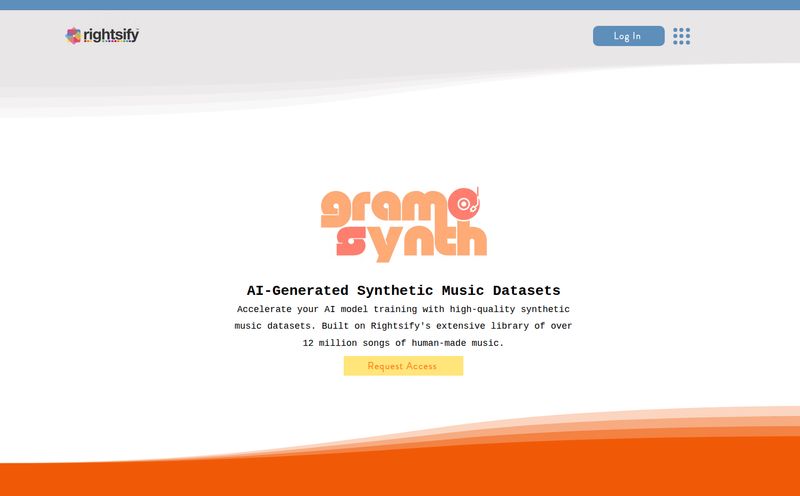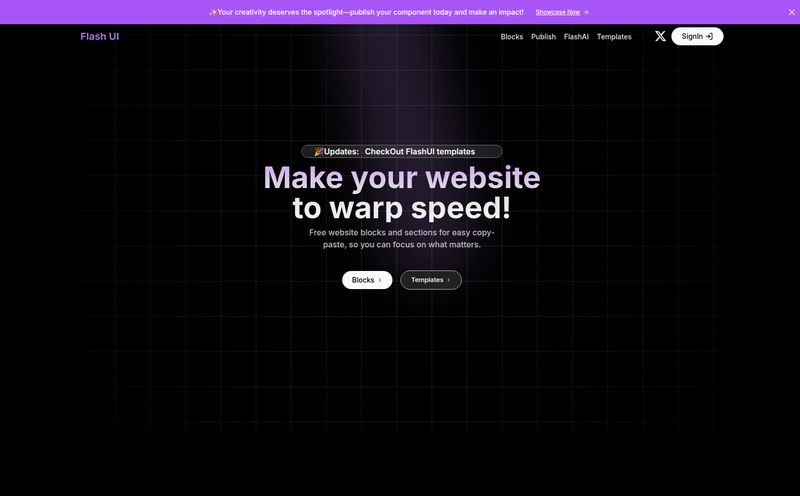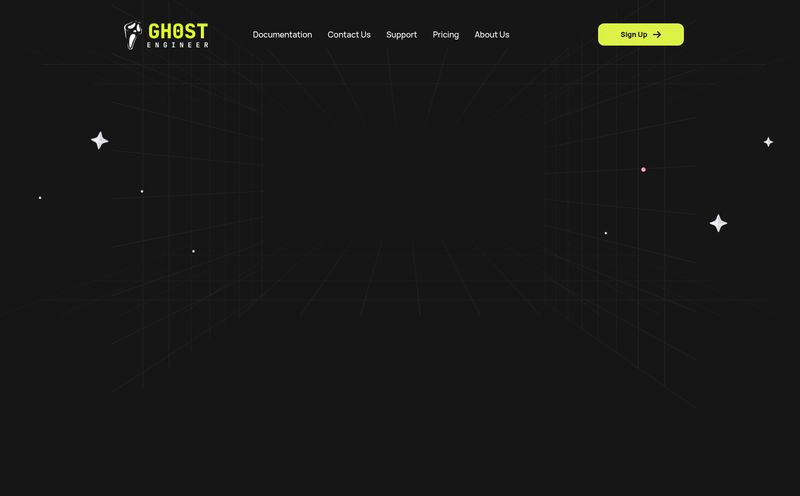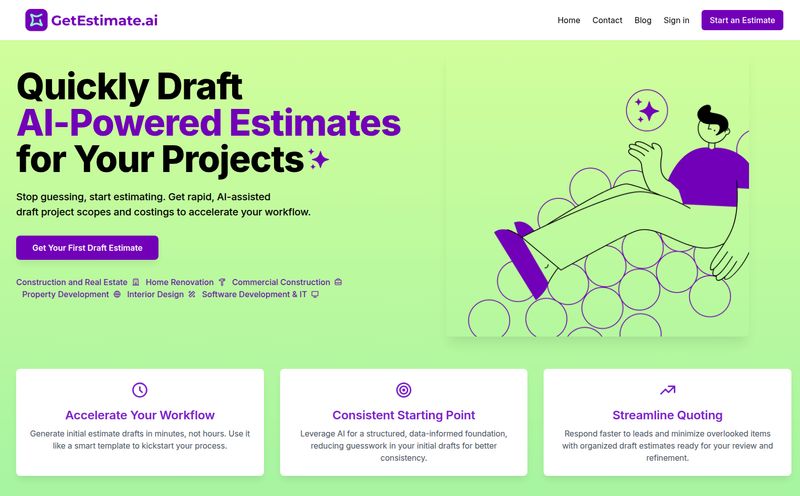Backend development. It's the monster under the bed for so many front-end developers and indie hackers. We love crafting beautiful interfaces and slick user experiences, but the moment someone mentions server configuration, databases, or API endpoints, a little part of our soul just withers. For years, the choice was either to learn a whole new, complicated discipline or hire someone expensive. Then came Firebase.
Firebase was a breath of fresh air, wasn't it? It handled so much of the backend grunt work, letting us focus on the fun stuff. But even with Firebase, you eventually hit a wall. You need to run a task every night at midnight. You need to process an image after it's uploaded. You need to connect to a third-party API via a webhook. And suddenly, you're staring down the barrel of writing, testing, and deploying Cloud Functions in Node.js. The monster is back.
Well, I recently stumbled across a tool that feels like a powerful charm to ward off that monster. It's called Backendflow, and it promises to give your Firebase apps superpowers, all without writing code. My curiosity was definitely piqued. So, I dug in to see if it’s the real deal or just another tool in the ever-growing no-code landscape.

Visit Backendflow
So, What is Backendflow, Really?
Think of Backendflow as a super-intelligent translator that sits between you and your Firebase project's more complex backend needs. It’s a no-code platform designed specifically to work with Firebase. You tell it what you want to do in plain English—or by clicking a few buttons—and it handles the how by generating the necessary server-side logic, like Cloud Functions, for you.
It's not trying to replace Firebase. Not at all. It's an enhancement. A force multiplier. It’s like having a senior backend developer on call, but one that’s powered by AI and doesn’t drink all your coffee. You still get all the power of Firebase Auth, Firestore, and Storage, but you get to layer on sophisticated backend processes without ever touching a line of server-side code or worrying about devops. It’s a pretty compelling idea.
The Killer Features That Caught My Eye
A tool is only as good as its features, right? Here’s what stood out to me as genuinely useful, not just marketing fluff.
AI-Generated Cloud Functions are the Star of the Show
This is the big one. The main event. The ability to generate Google Cloud Functions using AI is, frankly, incredible. If you've ever tried to write one from scratch, you know the drill: set up the project, install dependencies, write the Node.js code, figure out the triggers, test it locally (which can be a pain), and then deploy. Backendflow's pitch is simple: just describe what you need. For example, “When a new document is created in the ‘users’ collection, send a welcome email to the user’s email address.” The platform’s AI then writes, configures, and deploys that function for you. This single feature could save developers dozens of hours.
Scheduled Tasks with Cron Jobs
I remember a project a few years back where we spent weeks just setting up a simple scheduled task to clean out old user records. Weeks! The thought of doing that with a few clicks... man. Backendflow has cron jobs built-in. Need to run a function every morning at 9 AM to generate a report? Or every hour to sync data from an external source? You can just schedule it through their interface. No more wrestling with cron syntax or setting up external schedulers. This is a huge quality-of-life improvement for managing any app that requires routine maintenance or tasks.
Webhooks, Email, Search, and More Goodies
Beyond the main features, it's the little things that often make a platform truly great. Backendflow includes a bunch of them. Webhooks are essential for connecting with the outside world—think receiving payment notifications from Stripe or updates from a CMS. Having a simple way to create and manage these is fantastic. It also has built-in email integration, so you don't have to fuss with third-party email APIs for transactional emails. Plus, it offers powerful search functionality (something Firestore isn't famous for out of the box) and even GeoQuery capabilities for location-based apps. It's a really well-rounded toolkit for common application needs.
My Honest Take: The Good and The Not-So-Good
No tool is perfect for everyone. As an SEO and traffic guy, I know that positioning is everything. So who is this for, and what are the trade-offs? Here's my breakdown.
"The biggest benefit here is speed. Not just development speed, but the speed from idea to a functioning product. It radically lowers the barrier to entry for building a complete application."
The upside is massive, especially for a certain type of creator. If you're an indie hacker, a small startup, or a front-end developer looking to build a full-stack project, Backendflow could be a game-changer. The time saved by not having to learn backend development or hire a specialist is enormous. It lets you build and iterate incredibly fast. The fact that it completely eliminates the need for DevOps expertise is another huge win. Managing servers and environments is a specialized skill, and a costly one at that.
Now, for the potential hiccups. If you're building an incredibly complex, enterprise-grade system with very specific, bespoke backend requirements, a no-code tool might feel restrictive. You're trading infinite flexibility for speed and simplicity. There's also a degree of platform reliance; your backend logic lives within Backendflow. For most projects, this is a non-issue, but it's something to consider for mission-critical, long-term applications. Finally, like any new platform, there might be a slight learning curve to understand its interface and how it thinks. But lets be honest, it's probably a gentler curve than learning all of Node.js and Google Cloud.
Let's Talk Money: The Backendflow Pricing Situation
Okay, the all-important question: what's this going to cost me? At the time of writing this article, I couldn't find a public pricing page. This is pretty common for new tools in beta or early access. They're often refining their pricing model based on user feedback and feature usage.
My advice? Head straight to their official website, backendflow.io, and check for the latest information. They'll likely have a free tier for small projects or experimentation, with paid tiers that scale based on usage—like the number of function executions or cron jobs you run. This is just my educated guess based on how similar platforms operate.
So, Who Should Actually Use Backendflow?
After playing around and thinking it through, I have a pretty clear idea of who gets the most out of this tool.
- Indie Hackers & Solopreneurs: You can now build the entire backend for your SaaS idea over a weekend instead of a month. This is your secret weapon.
- Front-End Developers: Want to go full-stack without the pain? This is your bridge. You can build complete, robust applications using the skills you already have.
- Startups & Agencies: Need to build an MVP or a client project fast and on a budget? Backendflow lets you deliver a functional product without a dedicated backend team.
Who isn't it for? Probably large enterprise teams with existing backend infrastructure and highly specialized needs. But for the 90% of us building for the web, it's a very, very interesting proposition.
Frequently Asked Questions
- What exactly is Backendflow?
- Backendflow is a no-code development platform that helps you build backend features for your Firebase applications. It uses AI to generate things like Cloud Functions, cron jobs, and webhooks without you needing to write any code.
- Do I need to know how to code to use Backendflow?
- Nope! That's the main appeal. You don't need any backend coding or DevOps experience. You describe what you want, and the platform builds it for you. You should, however, be familiar with Firebase concepts like Firestore collections.
- How does Backendflow work with Firebase?
- It integrates directly with your Firebase project. It acts as a control panel to create and deploy backend logic (like Cloud Functions) into your Firebase environment, triggered by events in Firestore, Auth, or Storage.
- Is Backendflow a replacement for Firebase?
- No, it's a companion tool. It enhances Firebase by making it easier to add complex, server-side functionality that would normally require coding.
- What's the main benefit of the AI features?
- The primary benefit is speed and accessibility. It translates your plain English instructions into functional, production-ready code, saving you countless hours of development, testing, and debugging.
- Is Backendflow suitable for large, enterprise-level applications?
- It depends. For many features, yes. However, for extremely complex, bespoke systems, a custom-coded solution might still be preferable for maximum flexibility. It's perfect for MVPs, internal tools, and most standard web/mobile applications.
Final Thoughts on This No-Code Backend Tool
I'm genuinely excited about tools like Backendflow. They represent a real shift in how we build software. Is it a silver bullet that will solve every backend problem forever? Of course not. But is it a powerful new weapon in the no-code arsenal that can save developers a ton of time, money, and sanity? Absolutely.
By abstracting away the most painful parts of backend development, Backendflow empowers a new wave of creators to bring their ideas to life. If you're a Firebase user who has ever felt limited by your backend skills, you owe it to yourself to give this a look. It might just be the superpower your app was waiting for.
References and Sources
- Backendflow Official Website: backendflow.io
- Google Firebase Platform: firebase.google.com



